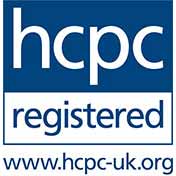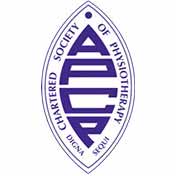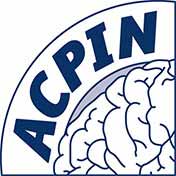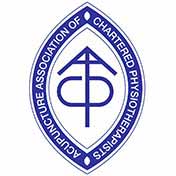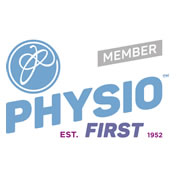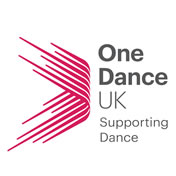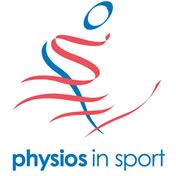Foot and Ankle Problems
The correct management of childhood foot abnormalities and any associated problems with walking can prevent the development of problems with the joints and limbs in later life. Although a child may not present with any pain, they may have poor foot and ankle positioning and mechanics, and subsequently issues with the way in which they stand and walk. Abnormalities in their gait pattern (arising from abnormal foot and ankle dynamics), may then lead to altered patterns of movement at their knees, hips and pelvis as the body compensates for these improper ‘biomechanics’.
 The foot of a child grows rapidly within the first 12 months of their life. Therefore, normal development relies upon appropriate action being taken at the earliest possible stage, in order to support this growth and provide a normal base upon which they can take their first steps.
The foot of a child grows rapidly within the first 12 months of their life. Therefore, normal development relies upon appropriate action being taken at the earliest possible stage, in order to support this growth and provide a normal base upon which they can take their first steps.
Children are not routinely screened for abnormal biomechanics. Therefore, if they do not complain of any pain, potential problems can go undetected. However, as their bodies develop around these abnormalities, problems can become evident later in life, sometimes not until adulthood. For example, such childhood issues might lead to an adult developing knee pain when running, hip pain when walking and / or back pain at various stages throughout their lives.
Talipes Equinovarus (Club Foot)
For the most part, babies begin their lives with their toes pointing slightly outwards. However, if the feet are held in an abnormal position whilst in the womb, deformities can occur which cause the feet to point inwards and downwards. This problem is termed ‘talipes equinovarus’, more commonly known as ‘club foot’. Talipes may either be congenital or associated with a neuromuscular disorder, the congenital form being more prevalent and affecting males more than females. It may also present alongside other congenital disorders such as Cerebral Palsy and Spina Bifida. The problem may affect one or both feet, and it is usually detected in newborns when the abnormal foot positioning is observed.
In general, around 50-60% of talipes cases can be corrected conservatively with manipulation and serial (plaster) casting from birth, although success does depend upon the severity of the condition, the rigidity of the individual, and any other associated muscular issues they may have. A surgical approach may be required for those who, despite conservative management, cannot achieve a neutral foot positioning, and this is usually undertaken after the child is over 6 months old. Surgical intervention may involve performing a release of the tendons responsible for holding the foot in the abnormal position, or may involve more complex orthopaedic procedures later in childhood to fuse specific joints and realign the bones of the foot and ankle.
In most cases, conservative management is sufficient, providing the process is instigated from the outset after birth. If delayed, the deformities can become more permanent as a child’s soft tissues become less flexible.
‘In-toeing’
‘In-toeing’ is the term used to describe the position of a child’s feet when they are walking (in other words where the toes point inwards). This may be the result of mis-managed talipes, or may be secondary to a hip problem which alters the position of the legs and feet below. In-toeing can make it difficult for toddlers to learn to walk, and can cause frequent tripping and falling. If dealt with by a Specialist Paediatric Physiotherapist and a Specialist Podiatrist within the early months and years of a child’s life, a programme of progressive stretches and a series of orthoses (insoles) can often correct this problem. As a general observation, by the age of 2 years, most children without a problem causing in-toeing will adopt a gait pattern where their toes point straight ahead or slightly outwards.
Conversely, toes that point excessively outwards cause a child to walk with an ‘out-toeing’ gait pattern. Similarly, this problem can usually be controlled by appropriate stretches and orthotics which support the normal structural development of the feet to achieve a normal gait.
‘Flat feet’
‘Flat feet’ is a normal presentation in babies whose feet have not yet touched the ground to begin walking. As a child begins to stand and walk, their feet develop muscular and soft tissue tension producing the ‘arches’ of the feet. If these arches are not appropriately formed, the feet rest flat to the floor which in turn causes the ankle bone (talus) to roll inwards (pronate). Feet that remain persistently flat as the child grows and develops, may lead to problems later in life, not solely from the feet, but also from other joints above the ankle.
Children with flat feet do not usually report significant pain from their feet. They may complain of a mild aching from underneath the feet, particularly if walking longer distances or running, and more so if they are overweight. They may also find that they cannot keep up with their peers when running due to the strain felt through their feet and lower legs. This is not necessarily something that they will simply ‘grow out of’, so issues such as this need to be detected and managed early.
Therefore, it is important if you should notice that your child is walking with an altered or flat foot position, or they complain of aching in their feet, that you arrange for them to see a Podiatrist and a Physiotherapist who specialise in paediatric biomechanical problems.
‘Metatarsus adductus’
‘Metatarsus adductus’ describes a condition that is seen within babies and young children. It is characterised by an inward twisting of the forefoot on a normally positioned rearfoot, which causes the main part of the foot to appear bent inwards or in a ‘varus’ position. It is actually quite a common presentation amongst newborns because of the position they adopt in the womb. It usually resolves within the first three months post birth, with mild ongoing cases responding fully to a programme of passive stretching.
In a small number of cases, the ‘adducted’ forefoot does not improve and becomes more rigid in a fixed position. Often a small bony lump will be palpable on the outside of the foot (where the rearfoot meets the forefoot), and these cases will require intervention from a Specialist Paediatric Podiatrist. Management is through serial (plaster) casting/bracing over a number of weeks until the deformity is corrected.
‘Toe-walking’
‘Toe-walking’ refers to a position that the feet adopt when walking which produces minimal or no heel strike. Some children naturally begin walking in this way, but grow out of the habit by about the age of two years. Those who continue to do so after this age can be managed with gait re-education, serial splinting / (plaster) casting, and a programme of specific stretches and exercises provided by a Paediatric Physiotherapist or Podiatrist specialising in these conditions.
If left unmanaged, the Achilles tendon and calf muscles can become shortened and tight over time, due to the persistently elevated heel position and reduced heel strike. Once these structures have become tight they, in turn, further prevent the heel from touching the ground when walking.
Toe-walking may also indicate the presence of other underlying conditions such as Cerebral Palsy, autism, or other developmental disorders, therefore must be investigated as soon as it becomes apparent. With autism, the vestibular system (the body’s movement and balance system) may not function correctly, and it is thought that this may be the reason why children with this condition are prone to toe-walking. The vestibular system provides the brain with information about the way in which the body is moving, and its position in space. When this system is dysfunctional, the brain may not be able to detect when heel strike is necessary, or sense the patterns of movement required for normal gait.
As already discussed, abnormal foot and ankle positioning has the potential to cause problems not only at the local area but, over time, within other musculoskeletal systems above, commonly at the knees, hips, pelvis and lower back. These are termed ‘biomechanical problems’ as the position and movement of the other associated joints and soft tissues are affected.
If your child has problems with walking and normal function in standing, or appears to have abnormal positioning of their feet and / or their lower limbs, it is important that you arrange for them to be assessed by an appropriate specialist as soon as possible. Your child can be fully screened for any of the conditions detailed above, or for any other underlying problems, which can then be managed accordingly. The early assessment and management of any biomechanical problem is vital and could influence your child’s future as they grow and develop into adulthood.
Here at Yorkshire Children’s Physiotherapy, we specialise in the screening, diagnosis and physiotherapeutic management of childhood biomechanical problems and conditions affecting the feet. Our Specialist Paediatric Physiotherapy Team can carry out a comprehensive assessment of your child in order to identify the nature and extent of their biomechanical status and any difficulties they may be experiencing.
If you would like to find out more about the services and treatments that we can offer, please feel free to get in touch. We can discuss any concerns and answer any questions you may have either over the telephone or by email, and we can arrange an initial assessment of your child if this is subsequently required.




